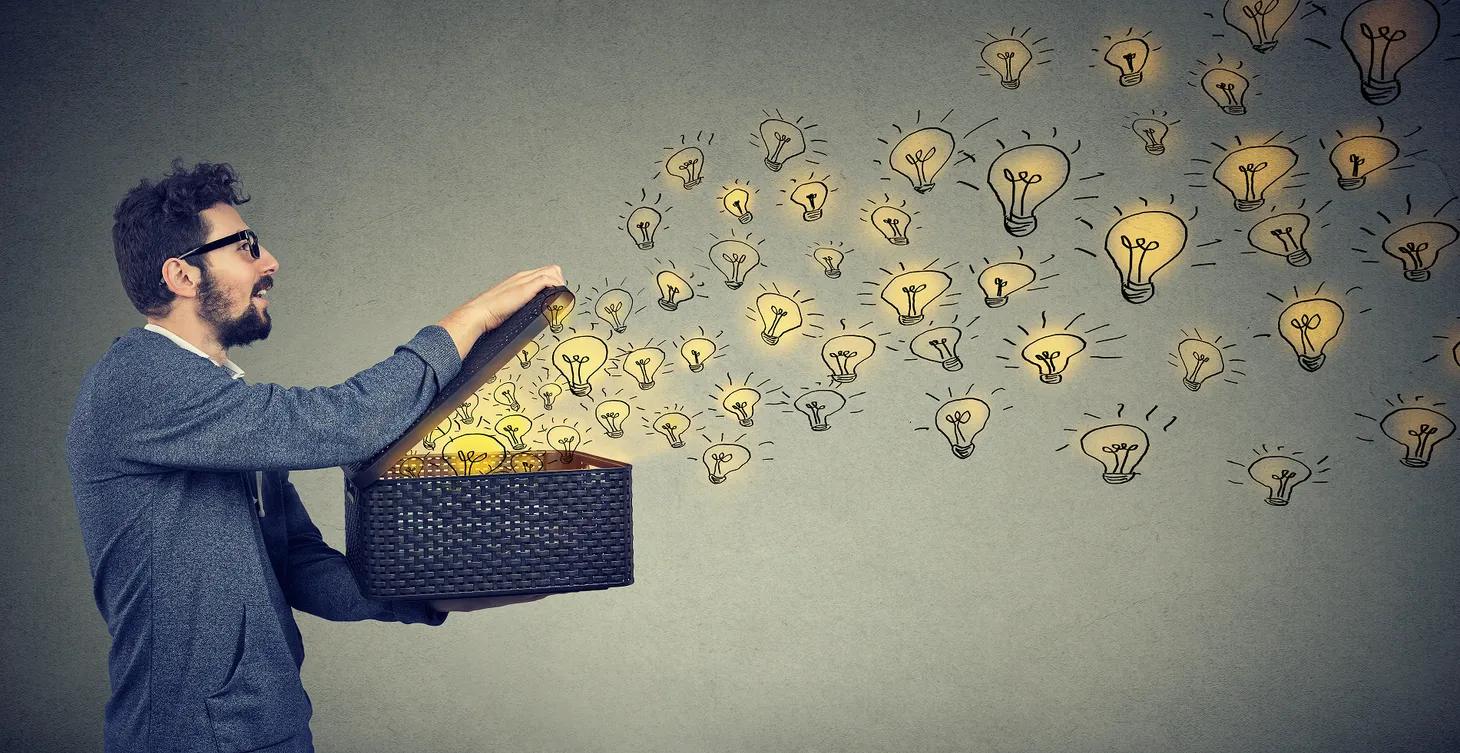Who Is The Driving Force Behind Creative Change?
There are so many stories of important innovations arising from serendipity, sudden bursts of inspiration, and lone geniuses going from idea to execution in their garages. In reality, though, innovation isn’t a magical process: sudden bursts of inspiration can certainly be important, but it takes a

There are so many stories of important innovations arising from serendipity, sudden bursts of inspiration, and lone geniuses going from idea to execution in their garages. In reality, though, innovation isn't a magical process: sudden bursts of inspiration can certainly be important, but it takes a whole lot of hard work to get from there to a finished product. To succeed, organizations need to adapt and change to embrace innovation.
What many people may not understand is that that hard work can be planned for and systematized so that everyone involved in the process is contributing in a way that plays to their strengths. Within larger organizations especially, innovators can’t rely on those random “aha” moments or some magical combination of personalities to move projects along. Innovation is a process, and like any process, it can be broken down into stages and roles that make things work in the most cohesive way possible.
Innovation isn’t magic. It happens through hard work, determination, and a team of individuals to create something amazing
Phil McKinney
There are many different ways of thinking about the innovation process and breaking it down. I’ve talked before about how I view the process, with the FIRE acronym:
FocusIdeationRankingExecutionAnother innovation thinker, Tom Kelley, describes the people necessary to move the process along in terms of the ten faces of innovation.
I think these ways of thinking about innovation are helpful because they make it easier to identify the next steps in the process, and make sure that everyone involved is playing a role that really matches their personalities and abilities.
So what kinds of people—innovation archetypes, so to speak—are important at each stage in the process?
The Focus Stage
During this earliest stage of innovation, you need people who are able to see the problems in front of them. They're highly observant, viewing the world through eyes that are able to zero in on potential problems and observe how a particular product, service, or process can be adapted in order to meet those needs.
The focus stage requires dreamers: people who aren't willing to accept the status quo and simply assume that things have always been this way and always will be this way, but who instead see the world as it could be. These dreamers are crucial for creating change in any organization. They're the ones who don’t let existing products or processes get in the way of potential. They become the driving force to create big change.
Dreamers are a critical part of any innovation process, but they can't allow it to stop with dreaming. They must also have the tools necessary to analyze problems and identify their causes. Tom Kelley talks about “Anthropologists” and “Cross-Pollinators”—the people who go out into the field and investigate the experiences of people to determine what might need to change, and those who can draw from many different ideas and concepts to come up with something new. These people must be extremely open-minded, and also able to articulate exactly what the problem is and describe the potential for change to the individuals who will take those dreams and make them reality. For example, they don't look at a slow assembly line and see only that it's slow. They also see the things that are slowing it down.
The Ideation Stage
At this stage, a team of innovators takes the problems identified in the first stage and looks at them as stepping stones to create change. They are able to look at a problem from multiple angles and see the way the different pieces might fit together to form a larger whole. Most importantly, they come up with as many ideas as possible about how to solve a problem.
This stage requires creative minds who are able to look at things from unique angles, experiment with a variety of ideas and concepts, and model various possible solutions—the people Kelley calls Experimenters. During the ideation stage, individuals must be willing to step out creatively without worrying about failure. They're able to toss out ideas, dream big dreams, and see the potential in multiple possible solutions.
The Rank Stage
Once a problem has been identified and many possible solutions brainstormed, organization takes over. This is the stage in which ideas are ranked and the best one is chosen, within realistic constraints. This requires what Kelley calls a Director persona: someone who is able to look over the ideas, compare them to the capabilities of the organization as a whole, decide what's actually feasible, and pull the resources together to make it happen.
During the rank stage, it's also useful to have what Kelley calls a Collaborator: someone who values the team as a whole, considering the big picture rather than the specific needs of any individual or department. Collaborators are able to look beyond personal satisfaction and see what will benefit the greatest number of individuals. They're also excellent at finding compromises that will satisfy everyone.
Most critical to the rank stage, however, is an individual who is capable of looking beyond problems that arise during the creative process and finding solutions for them (what Kelley calls a Hurdler). These individuals are filled with answers to critical questions. They don't accept “impossible.” Instead, they look for a way to make it reality and include those hurdles within the plans so that they won't stall the next phase of the process.
The Execution Stage
The execution stage is the final piece of the innovation puzzle, and it requires its own crew of talented individuals in order to make it happen. During the execution stage, all of the ideas and concepts thrown around during earlier stages of the process must be combined in order to bring about the finished product. Someone must build the finished product, figuring out how to make the actual design reality instead of mere concept. Someone must execute the designs—but the execution process is more than simply putting together the pieces developed in the early stages of the innovation process. It also requires finding new ways to fit the pieces together, overcoming the hurdles that were missed during the planning sessions and producing what was, at the beginning of the process, only a dream.
The execution process is also taking the concept beyond its current reality and sharing it with others. Someone must sell those outside the team on this new innovation. These people are what Kelley calls Storytellers and Caregivers—the ones who convey the value of the innovation and guide users through the experience to ensure that its full potential is reached.
Innovation doesn't happen magically. It happens through hard work, determination, and a qualified team of individuals, with individual strengths, who work together to create something truly game-changing.
To learn more about how your organization can create a better innovation process, contact me.
Phil McKinney Newsletter
Join the newsletter to receive the latest updates in your inbox.




